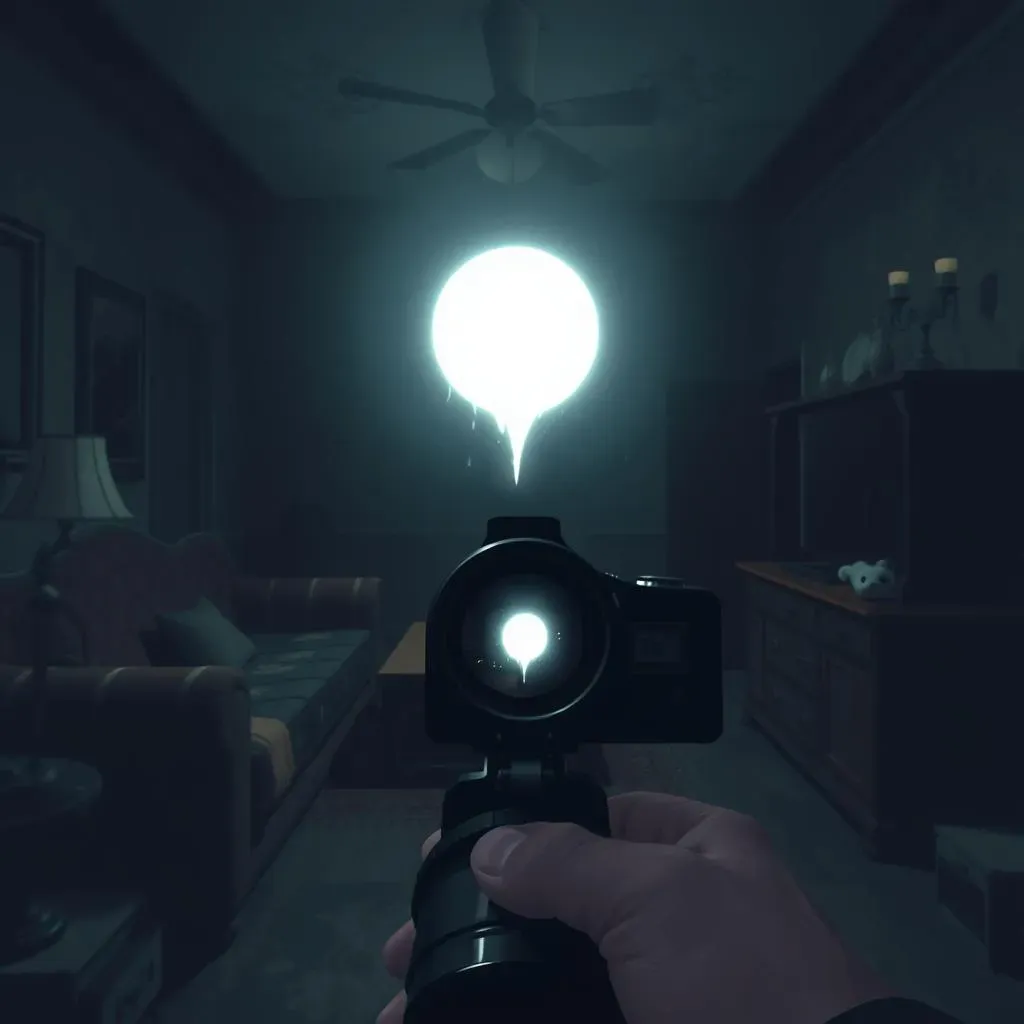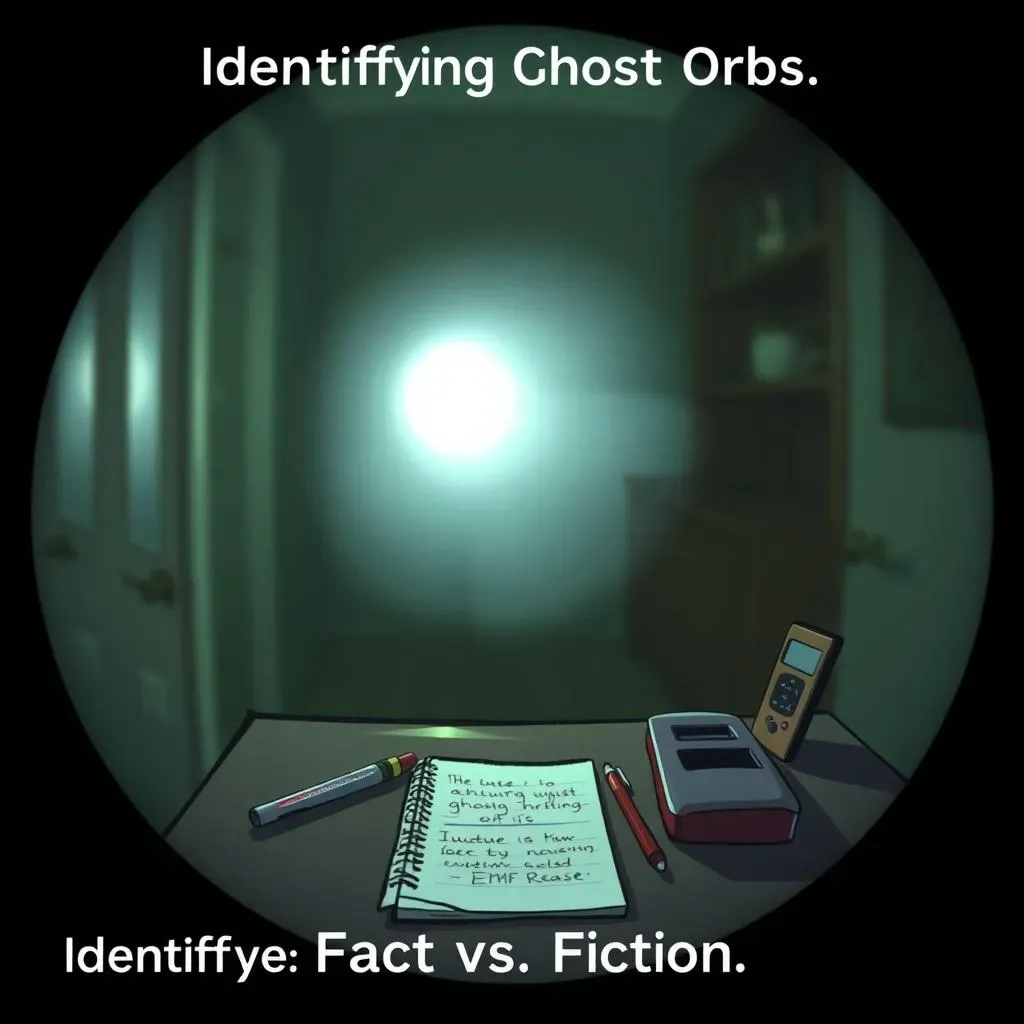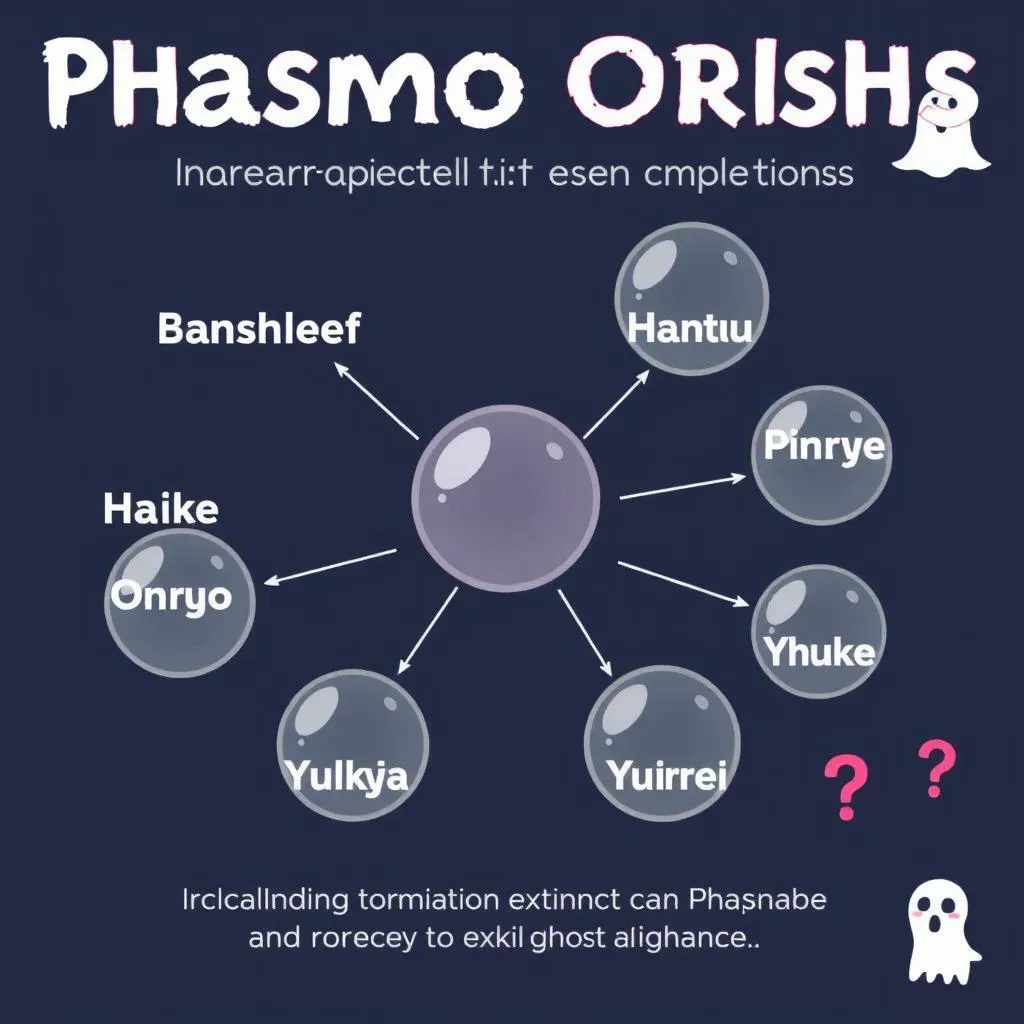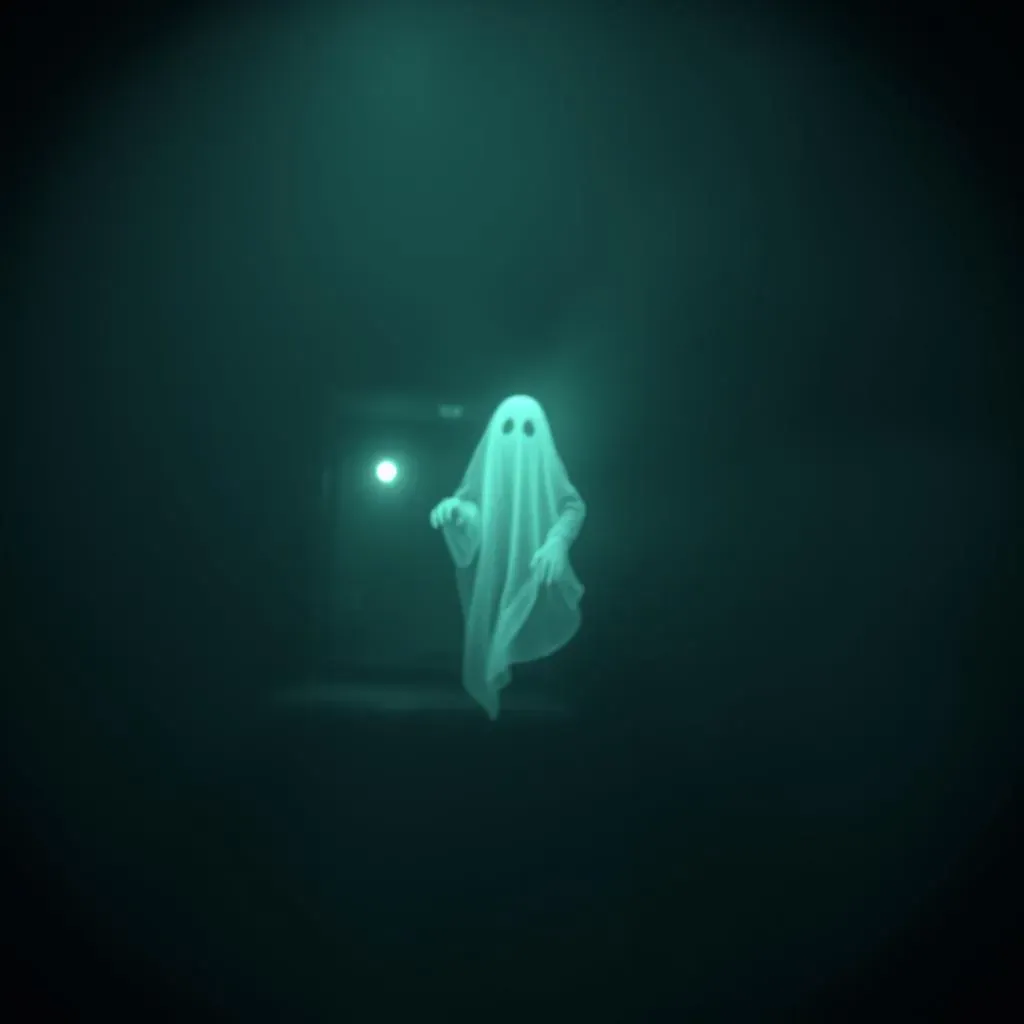Table of Contents
Ever wondered, "What are ghost orbs in Phasmophobia?" This chilling question plagues many players of this popular online horror game. Ghost orbs, a crucial piece of evidence, aren't easily spotted. They're elusive, appearing only as fleeting glimmers on your video camera's night vision. This guide will equip you with the knowledge to confidently identify these spectral anomalies. We'll explore what ghost orbs look like, how to distinguish them from other similar phenomena, and most importantly, which ghosts reveal themselves through this spectral evidence. Prepare to sharpen your ghost-hunting skills! We'll cover everything from practical tips for locating ghost orbs to a comprehensive list of the ghosts that utilize these eerie orbs as a telltale sign. By the end, you'll be a ghost orb expert, ready to tackle any haunted location with confidence. So, grab your cameras, turn on your night vision, and let's uncover the secrets behind "what are ghost orbs in Phasmophobia" together.
What are Ghost Orbs in Phasmophobia and How to Find Them
What are Ghost Orbs in Phasmophobia and How to Find Them
Understanding Ghost Orbs
So, you're diving into the spooky world of Phasmophobia and want to know what ghost orbs are all about? Imagine tiny, glowing white balls of light – that's essentially what they look like, but only on your video camera's night vision. They're not visible to the naked eye, making them a bit more challenging to find than other evidence. Think of them as sneaky little ghosts themselves, only revealing themselves to those with the right equipment. They’re a key piece of evidence that helps you identify the type of ghost haunting your location. Finding them requires a bit of detective work and a dash of patience, but it's totally worth it!
These orbs usually appear in the ghost's "home room" – the spot where it spends most of its time. That means you'll want to focus your camera on areas with increased ghost activity. Keep in mind, though, that on harder difficulties, even the ghost’s home room can change during the game. You might need to reposition your cameras if you're not seeing anything. Don't forget to check out our guide on freezing temperatures – understanding the cold spots can also help you narrow down where the ghost likes to hang out.
Evidence Type | How to Find It | Difficulty |
|---|---|---|
Ghost Orbs | Video Camera (Night Vision) | Easy to Expert |
Using the Video Camera Effectively
The video camera is your best friend when hunting for ghost orbs. You can either wander around with it, scanning the room, or set it up on a tripod in a suspected ghost room and monitor the feed from the van. The latter method is often preferred because you can easily review the footage. Remember to turn the night vision on – it's crucial for spotting those faint orbs. If you find yourself struggling with other evidence, our guide on Tarot cards might be helpful.
Keep an eye out for small, bright white circles moving erratically across the screen. They aren't always easy to see, even with night vision, so be patient and watch carefully. Remember, the ghost orbs are often subtle, so don't get discouraged if you don't spot them right away. Sometimes, it takes a little time and several camera placements to find them. And remember: if you're playing with friends, teamwork makes the dream work! One person can set up the cameras while others investigate other evidence.
- Use night vision on your video camera.
- Place cameras in suspected ghost rooms.
- Review camera footage carefully.
Distinguishing Ghost Orbs from Other Phenomena
One common mistake is confusing ghost orbs with other things, like dust motes or reflections. Ghost orbs are typically brighter and move more erratically than dust. They also tend to appear in the same area repeatedly. If you're unsure, take a look at the video footage again. Sometimes, multiple views can help clarify whether something is a ghost orb or just random visual noise. If you're still unsure, check out our guide on fast ghosts – sometimes, a quick ghost can make it harder to spot evidence.
Remember, some ghosts, like the Mimic, can create *fake* ghost orbs as a distraction, so don’t get too excited until you've confirmed your other evidence! Always try to gather multiple pieces of evidence to make a positive identification. Don't be afraid to experiment with different camera placements and angles. Sometimes a subtle change in position can make all the difference. Good luck, and happy ghost hunting!
Identifying Ghost Orbs: Separating Fact from Fiction in Phasmophobia
Identifying Ghost Orbs: Separating Fact from Fiction in Phasmophobia
Identifying Genuine Ghost Orbs
So, you've got a blurry white blob on your night vision camera. Is it a ghost orb, or just some pesky dust? Distinguishing real ghost orbs from imposters is crucial for accurate ghost identification in Phasmophobia. Remember, those sneaky Mimics love to throw you off the scent with fake orbs! Let's learn how to spot the difference. First, genuine ghost orbs are usually brighter and move more erratically than simple dust motes. They often appear repeatedly in the same general area, hinting at the ghost's preferred hangout spot. If you're still unsure after reviewing your footage, consider other evidence. Sometimes, a combination of evidence can help confirm the presence of ghost orbs. For example, if you’ve already found cursed objects, it might narrow down the possibilities.
Another thing to keep in mind is the environment. On outdoor maps, especially, you'll need to differentiate ghost orbs from rain, snow, or other weather effects. Real ghost orbs tend to move horizontally or even upwards, unlike falling precipitation. They also appear brighter and more defined than simple weather effects. If you're struggling to identify the ghost, our guide on medium maps can help you focus your investigation on the areas most likely to yield evidence.
- Brightness: Ghost orbs are brighter than dust or reflections.
- Movement: Ghost orbs move erratically, not in a straight line.
- Location: Ghost orbs tend to reappear in the same area.
- Weather: On outdoor maps, differentiate orbs from rain or snow.
Sometimes, a single piece of evidence isn't enough. If you're still uncertain about the ghost orbs, try collecting other evidence, such as EMF readings or spirit box responses. Combining multiple types of evidence increases your chances of correctly identifying the ghost. Remember, even experienced players sometimes misinterpret evidence. Don't be afraid to ask for help from your teammates or consult online resources if you're stuck. There are tons of great resources available online to help you improve your ghost hunting skills. This includes various guides, forums, and video tutorials – just remember to be cautious about spoilers!
Remember, the Mimic is a master of deception, capable of generating fake ghost orbs to confuse you. The Mimic is a particularly tricky ghost to identify, as it can mimic the evidence of several other ghost types, making it difficult to pinpoint the correct ghost. If you suspect you might be dealing with a Mimic, it's vital to carefully examine other evidence to rule out other possibilities. Pay close attention to the ghost's behavior and interactions with your equipment. This might give you clues about its true identity. If you’re having trouble with this, our guide on Phasmophobia platforms might help you find a friend to play with.
Phenomenon | Appearance | Movement |
|---|---|---|
Ghost Orb | Bright, white circle | Erratic, unpredictable |
Dust Motes | Faint, blurry | Slow, predictable |
Reflections | Variable, often distorted | Static or follows camera movement |
Which Ghosts in Phasmophobia Exhibit Ghost Orbs as Evidence?
Which Ghosts in Phasmophobia Exhibit Ghost Orbs as Evidence?
The Ghostly Lineup
Alright, let's get down to the nitty-gritty: which ghosts in Phasmophobia actually leave behind those spooky ghost orbs? Knowing this is a game-changer, because it immediately narrows down your suspect list. It's like having a secret cheat sheet! This is where careful observation and combining evidence becomes crucial. Spotting a ghost orb is exciting, but it's just one piece of the puzzle. You'll need to gather at least two more pieces of evidence to confirm your suspicions. If you're struggling with other evidence types, our guide on cursed objects might be a helpful resource. Remember, even with a ghost orb sighting, you're not done yet. The hunt continues!
The Mimic, a particularly tricky ghost, throws a real curveball. This mischievous spirit can create *fake* ghost orbs, making identification even more challenging. So, while seeing a ghost orb is a strong indicator, don't jump to conclusions too quickly. Always collect more evidence before making a final call. If you’re still unsure, our guide on different medium maps might help you understand ghost behavior better.
- Banshee
- Hantu
- Mare
- Obake
- Onryo
- Raiju
- Revenant
- Thaye
- Yokai
- Yurei
Eliminating the Imposters
Let's talk about the Mimic again – that sneaky little ghost that loves to play games with your evidence. This ghost is the only one that can create fake ghost orbs, so it's important to be aware of its potential for deception. The Mimic can manifest other evidence types too, making it crucial to gather multiple pieces of evidence before making a final identification. If you're having trouble with other types of evidence, our guide on fast ghosts might offer some helpful hints.
The key to identifying a Mimic is to look for inconsistencies in the evidence. If you find ghost orbs but other evidence points to a different ghost type, it's likely a Mimic trying to trick you. Always compare and contrast your findings before making a definitive identification. If you’re struggling to find the right combination of evidence, consulting online resources and guides can greatly help. There are tons of resources for Phasmophobia platforms and strategies. Just remember to be careful about spoilers!
Ghost Type | Evidence | Mimic Potential? |
|---|---|---|
Mimic | Variable (including fake ghost orbs) | Yes |
Banshee | Ghost Orbs, etc. | No |
Hantu | Ghost Orbs, etc. | No |
